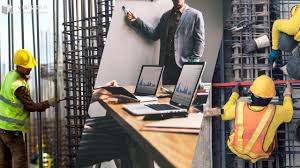As technological innovation is constantly progress, the panorama of construction software grows, ushering in new styles and improvements that change how projects are conceptualized, carried out, and maintained. Here are a few key tendencies shaping the future of construction software:
Integration of Unnatural Learning ability (AI) and Machine Studying (ML):
AI and ML algorithms are increasingly being integrated into construction software to speed up repeated tasks, maximize resource allocation, and give details-motivated ideas for determination-creating. Examples include:
Predictive statistics for timetable and finances forecasting.
AI-powered chance analysis and mitigation strategies.
Equipment learning algorithms for refining building styles based on overall performance details.
Adoption of Augmented Truth (AR) and Digital Actuality (VR):
AR and VR technological innovation are changing the way construction tasks are visualized, prepared, and accomplished, supplying immersive experiences and improved spatial being familiar with. Software incorporate:
VR-dependent online walkthroughs for style validation.
AR overlays for on-site construction advice and top quality control.
Far off alliance making use of AR-enhanced video conferencing resources.
Accept of Internet of Stuff (IoT) and Sensing unit Technology:
IoT devices and devices embedded within construction websites and constructing components make it possible for true-time keeping track of of various variables, enhancing basic safety, efficiency, and sustainability. These include:
IoT-enabled gear keeping track of for supply management.
Environment devices for keeping track of quality of air and temp.
Intelligent building solutions for electricity management and predictive routine maintenance.
Increase of Cloud-Centered Remedies:
Cloud-centered construction software will continue to get grip, providing scalability, mobility, and ease of access pros over conventional on-premises remedies. Important benefits incorporate:
Centralized information storage and convenience from anyplace, any time.
Smooth collaboration among distributed project crews.
Intelligent software up-dates and upkeep, minimizing IT business expense.
Center on Sustainability and Eco-friendly Building Methods:
Construction software is increasingly incorporating features to back up sustainable building techniques, for example energy modeling, lifecycle analysis, and material locating optimisation. Important functionalities incorporate:
Carbon dioxide footprint evaluation and lowering tactics.
Incorporation with green developing accreditation courses.
Offer sequence visibility for environmentally friendly finding of materials.
To conclude, the way forward for construction software is noted by creativity, powered by rising technological innovation and growing industry needs. By adopting these tendencies and harnessing the potency of sophisticated electronic digital resources, construction businesses can navigate obstacles and seize options in a ever-shifting landscape.
